How to Stir Fry Veggies Without a Wok
Though cooking a stir-fry dish takes minutes, there's more to stir-fry technique than meets the eye. In this post, we're sharing our need-to-know tips on how to make Asian stir-fry dishes (like the char kway teow in the featured image of this post) the right way, no matter what ingredients you're using. And all in one article!
Becoming a good cook takes time. To me, cooking is not an ability but a willingness––a willingness to plan, procure, study recipes, and combine ingredients in a hot wok.
In our comments section, many readers have shared unforgettable stories of their loved ones' cooking and memories they cherish. Food is love, and for those of you already cooking, you have my utmost admiration. For those who haven't gotten started yet, it's time to return the love––even if you're cooking for one.
How to Make Stir-fry: All Our Tricks
The idea for this post came to me as I was writing my recent recipe for Pineapple Fried Rice . As I discussed the ideal size of the pineapple chunks (for the perfect sweetness), and cutting the ham according to its level of saltiness, I realized that the steps to achieving the "perfect bite" of a stir-fry dish––with the right balance of flavors, textures, and presentation––aren't necessarily obvious. It truly is an art!
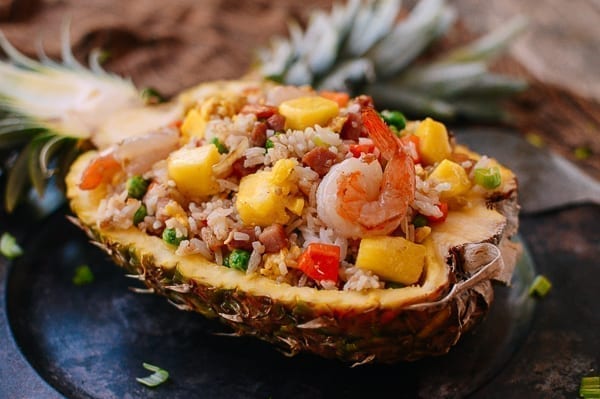
Many of these tips are not new to Woks of Life readers. We have shared most of them across our recipe posts, including recipes we'll use as examples here.
However, this article gathers them all in one place, and together, these tricks will make you a stir-frying wizard. In this post, we'll cover the 4 key parts of how to make stir-fry perfectly every time:
- Deciding on taste
- Formulating the ingredients
- Wok hei
- Execution
Let's get into it, shall we?
1. Deciding On Taste
Choosing your overall flavor profile isn't an issue when following a recipe, but if you're in the mood to free-style, you'll have to follow your fancy and what you have available in your pantry.
For example, you may decide to base your flavor profile on fermented black beans, with their salty umami bite, like in our Tofu with Black Bean Sauce or Beef with Bitter Melon , where the intense umami of the fermented black beans balances the bitterness of the melon.
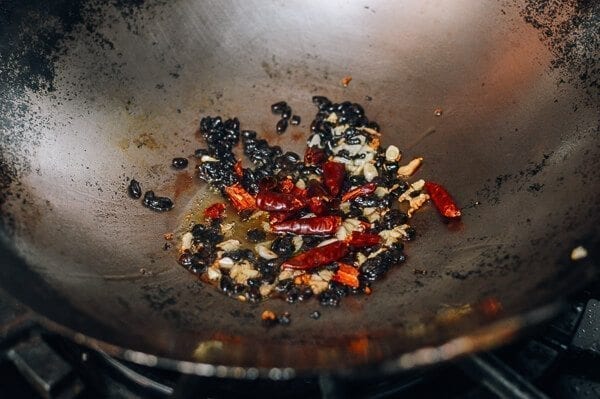
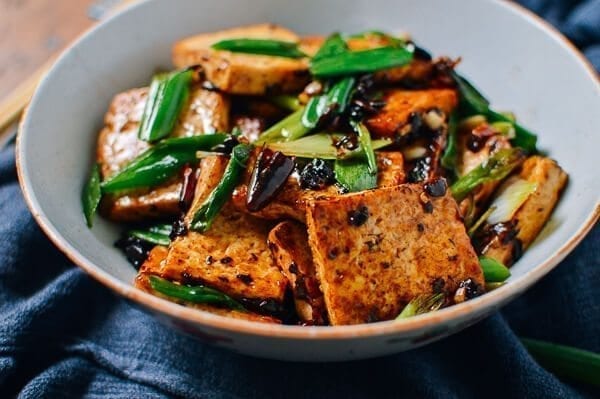
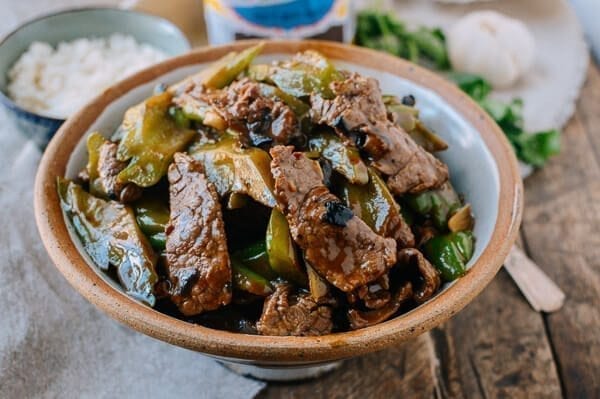
You may decide you want your dish to have both umami and sweetness from bean sauce, like in our Pork Stir-fry with Sweet Bean Sauce .
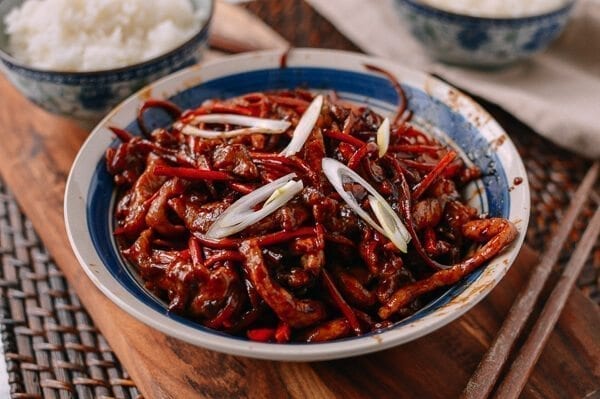
You may also want a simple Chinese stir-fry sauce , flavored with soy sauce, oyster sauce, and Shaoxing wine, like the one we use in our Beef and Broccoli .
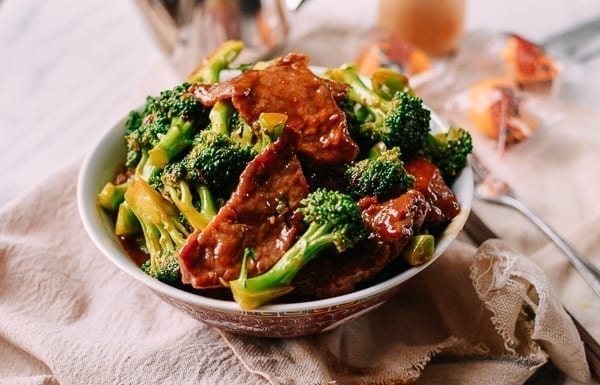
You may even decide to let the ingredients in the dish shine, and flavor the dish more subtly with chicken stock, light soy sauce, sesame oil, and a dash of oyster sauce, such as in our Chicken with Snow Peas , where the flavor of the chicken and the sweetness of the snow peas are simply enhanced.
In general, deciding on the taste of your stir-fry is about identifying the source of umami for the dish. When in doubt, give our Chinese Stir-fry Sauce a try, which is a great recipe to use in everyday stir-fries, with whatever ingredients you have available.
2. Formulating the Ingredients
This part is easy enough. You may have a specific recipe in mind, but a stir-fry is also a great way to clean out your refrigerator of odds and ends.
Stir-fry can be more than just a protein with a few vegetables. If you search "stir-fry" in our website's search bar , you'll find a wide range of stir-fry dishes, including noodle dishes like Char Kway Teow , fried rice dishes like Chinese Sausage Fried Rice , and vegetarian stir-fries like Tofu with Black Bean Sauce .
Here are the key things to remember when formulating your ingredients:
Limit the number of main ingredients to 3-5.
Otherwise, your stir-fry can quickly turn into a mishmash rather than a harmonious mix of flavors and textures. Before deciding on what to include in a stir-fry, you must know each ingredient's "job" in a dish.
A good stir-fry offers layered textures. Combine something soft like noodles or tofu, with something naturally sweet and crunchy like carrots, scallions, or bok choy, and finally, something with an umami savoriness, like meat or mushrooms.
You can see this balance in one of Sarah's favorite dishes, Beef & Tofu Stir-fry.
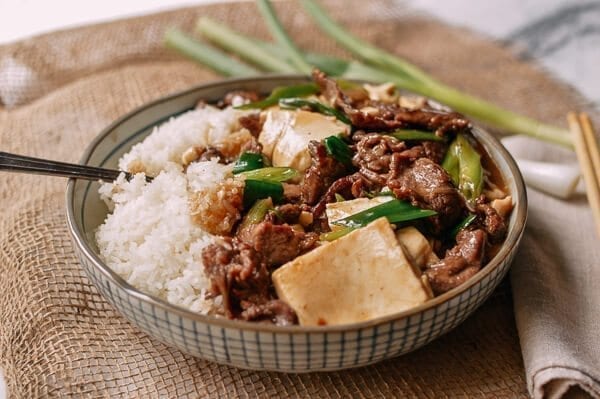
Know the right size and shape of each ingredient.
This is an art in and of itself. Stir-fry ingredients are usually either sliced or julienned. If the main ingredient is julienned, most of the other ingredients should be julienned as well, as you can see in our Pork with Garlic Sauce .
This not only creates good texture, it also ensures everything is cooked evenly. If there are big vegetable pieces in the dish like broccoli or chunks of bell pepper, blanch them beforehand or par cook them in the wok before adding them to the final stir-fry. When it comes to the protein, you may want thicker slices to ensure juiciness and tenderness, or julienned pieces to further distribute the meat in the dish.
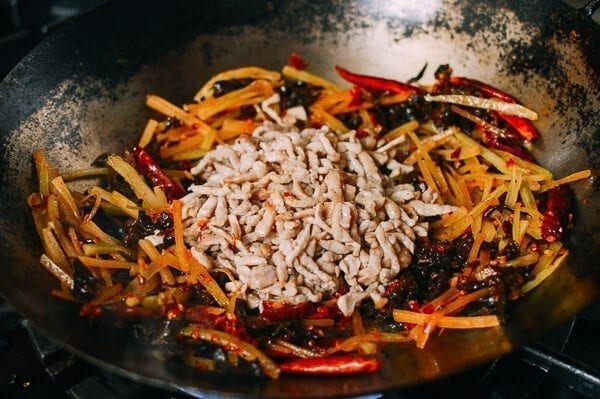
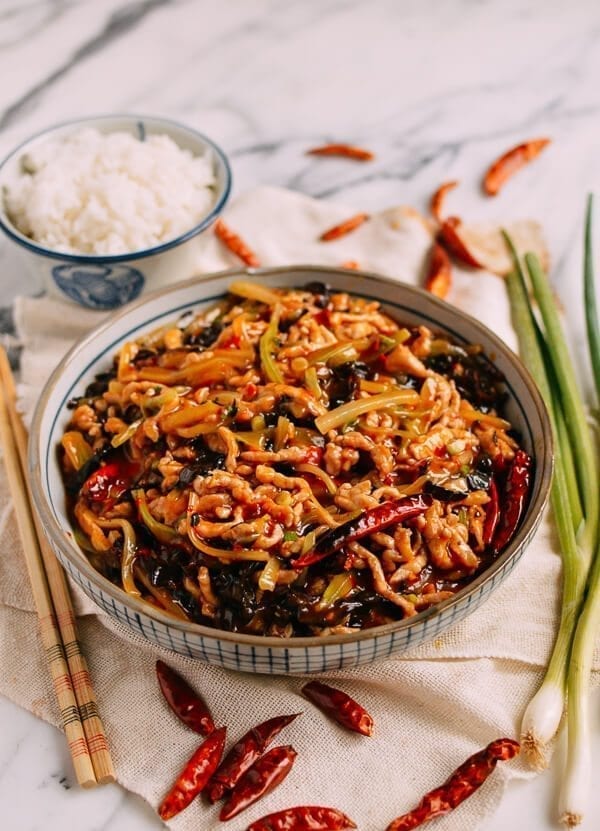
Know the cooking time for each ingredient.
Just as you just know the right shape and size of each ingredient to cook them all evenly, you must also know the approximate cooking time of each one. More delicate vegetables, like bean sprouts or Chinese chives, will cook within 30 seconds to a minute and do not require any pre-cooking.
Dense, drier vegetables like carrots and broccoli, however, may need to be blanched beforehand (for 30 seconds to 1 minute), unless they are cut into very small pieces or finely julienned. For example, in our Chicken and Broccoli , the sliced chicken cooks very fast, making it important to blanch the broccoli first so the chicken and broccoli are both at the perfect level of doneness.
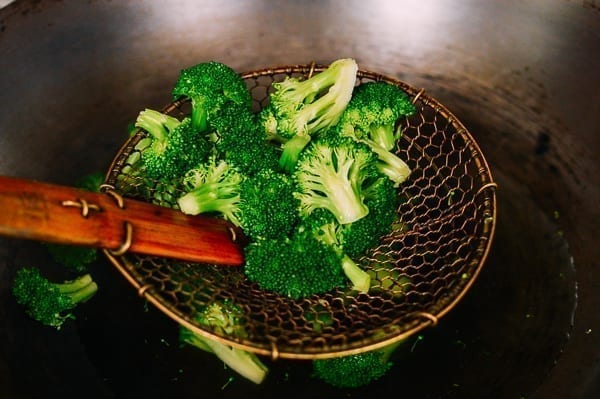
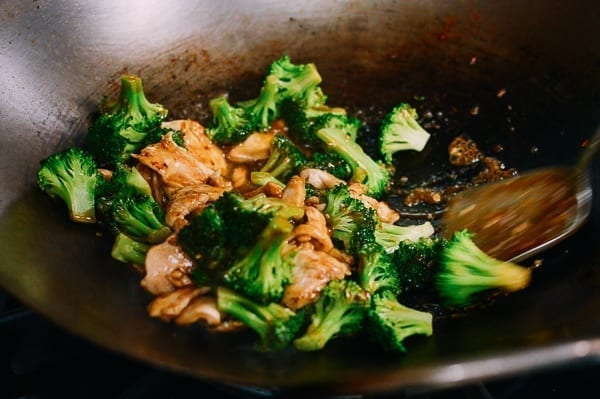
Note: Blanching is not the only method to prepare a vegetable for stir-fry. I often like to dry-fry string beans before stir-frying, which you can see in my Sichuan Dry Fried String Beans and my Green Beans with Pork & Olive Vegetable . I also do it with both string beans and eggplant in this Eggplant String Bean Stir-fry .
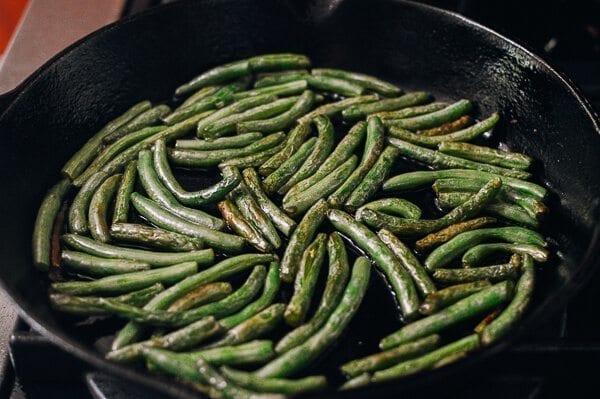
I also like to pre-cook julienned carrots to get a nice orange colored oil like in our Pork Stir-fry with Sweet Bean Sauce . I came up with these tricks with time and experience. You will come up with your own cooking tricks the more you cook. I'm sure many of you already have your own that you're eager to share in the comments below!
Never overcrowd your wok.
Also consider the total quantity of ingredients you have. Overcrowding a wok with too many ingredients cools it down severely, creating more of a slow-boiling stew than a stir-fry.
We home cooks are already disadvantaged by not having stoves powerful enough to heat a wok up to the temperatures reached in restaurant kitchens. You're shooting yourself in the foot if you're also overcrowding the wok with too much stuff!
A good rule of thumb: your stir-fry should occupy no more than a third of the total volume of your wok. If all the ingredients were to be flattened into the bottom of the wok, they should be, at most, halfway up the height of the wok.
Use high smoke point oils.
Avoid using any cooking oil that can't take high heat. Extra virgin olive oil, for example, should be consumed raw to reap all its health benefits, and its smoke point is somewhere around 350 degrees F, making it a bad choice for high heat cooking . Coconut oil, which has become popular in recent years, also has a low smoke point of 350 degrees F.
My go-to oils for stir-fries are avocado oil (it's the best choice, with a smoke point of 520 degrees F), light olive made for sauteing and grilling (smoke point: 468 degrees F) and canola/vegetable oil (it has a lower smoke point of 400 degrees F, but is more readily available and affordable).
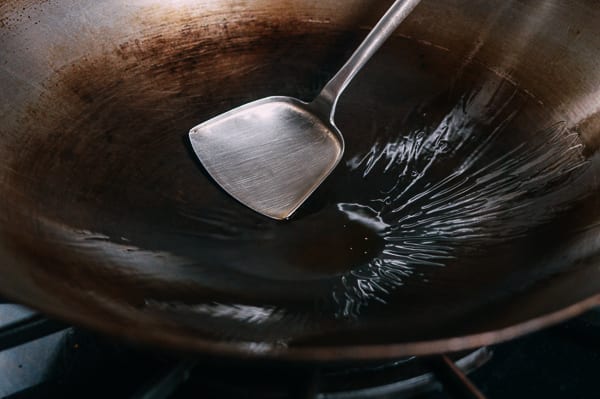
Always marinate meats before stir-frying.
Vegetarian stir-fries are delicious without meat (have you tried this Sichuan Napa Cabbage Stir-fry ?), but if you do use protein like chicken, pork or beef, marinate the meat beforehand for 10-15 minutes to enhance flavor, seal in juices, and give the meat a good texture. The marinade will usually include a bit of oil and cornstarch for texture, and may also include flavor agents like soy sauce, Shaoxing wine, or oyster sauce.
Another trick I've learned is to add a little bit of water to the marinade, to ensure the meat will be soft and tender. Add 1-2 tablespoons water for every ½ pound of meat, and massage the meat until it has absorbed the liquid. For more details, see Bill's method on How to Prepare Beef for Stir Fries. If you're thinking chicken, then you must see our post on Velveting Chicken for stir fry.
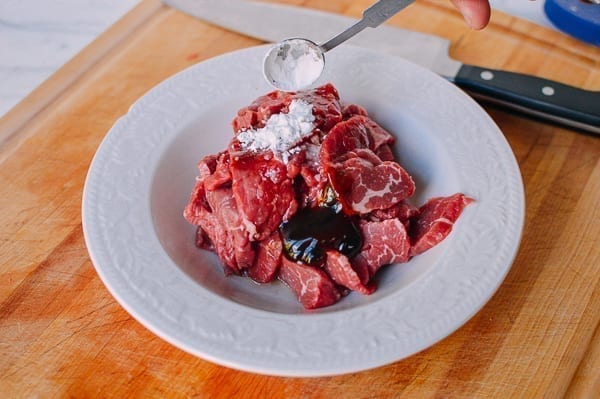
Sear meat first.
Many of our stir-fry recipes ask you to sear the meat first and then add it back to the dish towards the end. This creates a good texture (the process of marinating and pre-cooking meat for stir-fry is called "velveting") and seals in any juices, so the meat doesn't overcook while you're cooking the vegetables.
In some cases, this isn't necessary. If the vegetables in the stir-fry cook fast, you can add the protein after cooking the aromatics (like garlic and ginger) and add the vegetables right after. This can also yield a cleaner dish, since you won't end up with any burned bits (left from searing the meat and heating them again) in the final dish. Check out Judy's method for Searing Meats Without Sticking to the Wok.
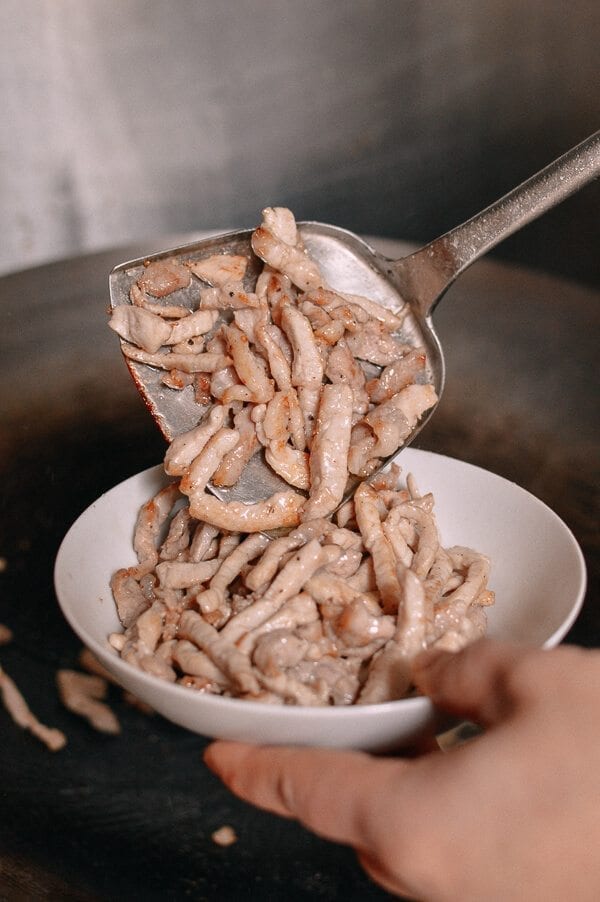
Decide whether or not to include sauce.
Sauce or no sauce, is a personal preference. I personally don't like a lot of sauce, because I think it takes away from the wok hei and makes flavors less intense. I usually like the natural juices from the vegetables, meat, and seasonings to coat the ingredients lightly, like in Sarah's Thai Chicken Stir-fry with Basil & Mint .

If there were absolutely no liquid in the wok, I'd add just a couple tablespoons of stock or water to moisten it and prevent the ingredients from burning. Many people prefer sauce, however, and it's definitely not a bad thing. Just remember to pre-mix the sauce so as not to drag out the cooking time.
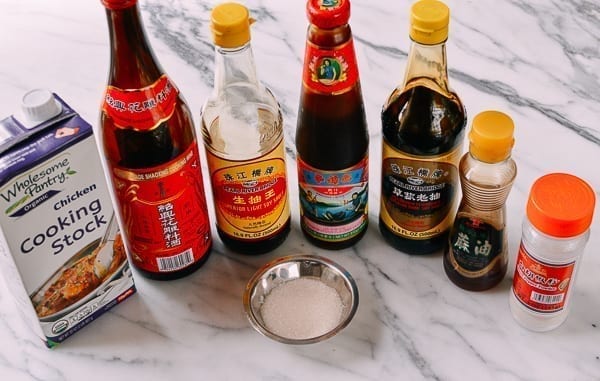
You can also check out our all purpose Chinese stir-fry sauce recipe and How to use Cornstarch for Chinese Cooking.
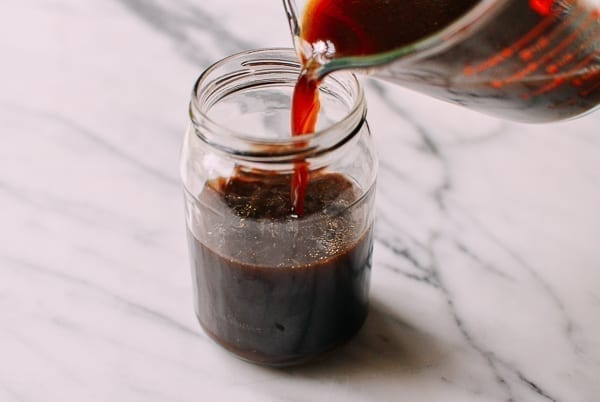
3. Wok hei:
Wok hei, or "the breath of the wok," is a complex charred and savory aroma given to dishes stir-fried at high heat, and it is the true essence of a good stir-fry. Wok hei is also what will make your stir-fries taste restaurant quality.
The key to achieving wok hei is to begin with a hot wok and finish (still) with a hot wok. It can be challenging in a home kitchen with a regular stove (rather than the fiery blazes that Chinese chefs use in commercial kitchens). But I have some important tips for getting wok hei at home!
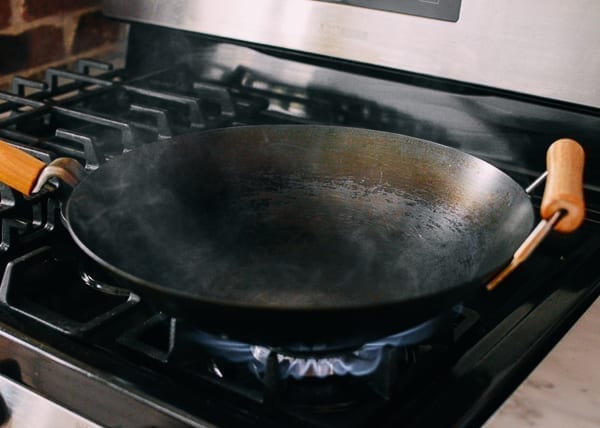
- Always start with a clean, dry wok. The wok should be very hot and lightly smoking before you add the oil. This prevents food from sticking and is the best way to put wok hei into your food.
- More often than not, the entire stir-fry process should be on high heat. This is especially important at the step when all the ingredients come together.
- As already mentioned, do not overcrowd the wok with too many ingredients. Trying to cook too big a batch at once will cool down the wok and prevent you from achieving wok hei.
- Once all the sauces and spices are in, pile the food high in the center of the wok, and cover the lid for 1 minute. This gives the sides of the wok time to heat up, since all the food (which would cool down the surface of the wok) is concentrated in the middle.
- Then lift the lid, and stir the contents of the wok around the hot sides to sear the food once again. Any sauce will thicken during this process to coat the food. This is especially important when the dish was wet to begin with, like our Beef Tomato Stir-fry.
4. Stir-fry Execution
Speed and high heat are critical to a well-executed stir-fry. Before you start, read the recipe a couple times to make sure everything is prepared for each step.
If it's your own creation, think about your approach to the stir-fry and have a plan in mind before you turn on the heat. Imagine the whole process in your head like a movie. Have all the ingredients cut, marinated, blanched, and drained, and position them at a reachable distance where they're visible.
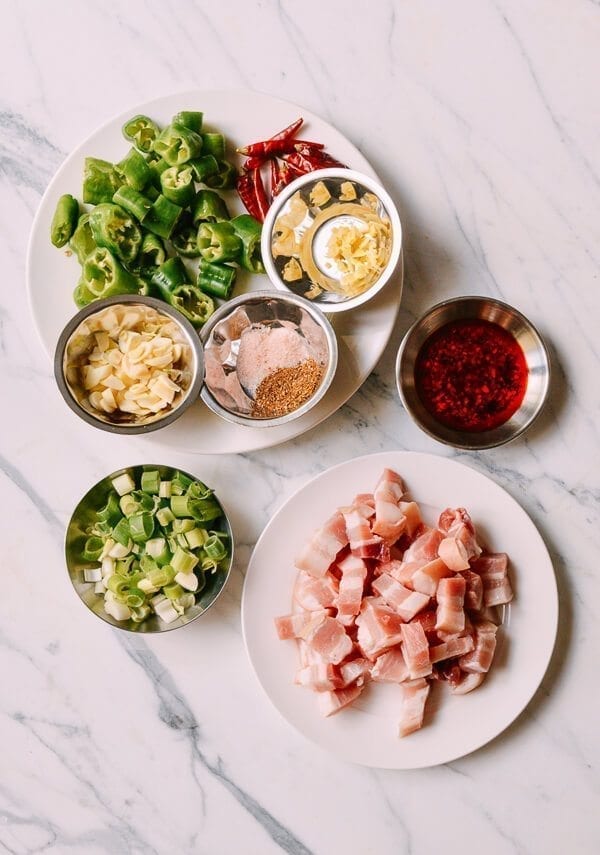
Even we forget an ingredient or two after the dish has been completed, and the culprit is usually that the chopped scallions or bean sprouts, meant to be added at the end, weren't within eyesight during cooking!
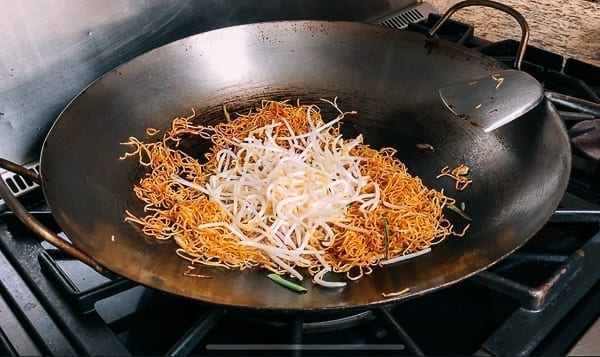
Finally, always eat your stir-fry when it's just come out of the wok, when it's freshest, tastiest, and most delicious!
I hope you enjoyed my post on how to make stir-fry and the techniques we use to make restaurant-quality Chinese and Asian stir-fried dishes at home. If you have any other questions, please let us know in the comments!
How to Stir Fry Veggies Without a Wok
Source: https://thewoksoflife.com/how-to-make-stir-fry/
0 Response to "How to Stir Fry Veggies Without a Wok"
Post a Comment